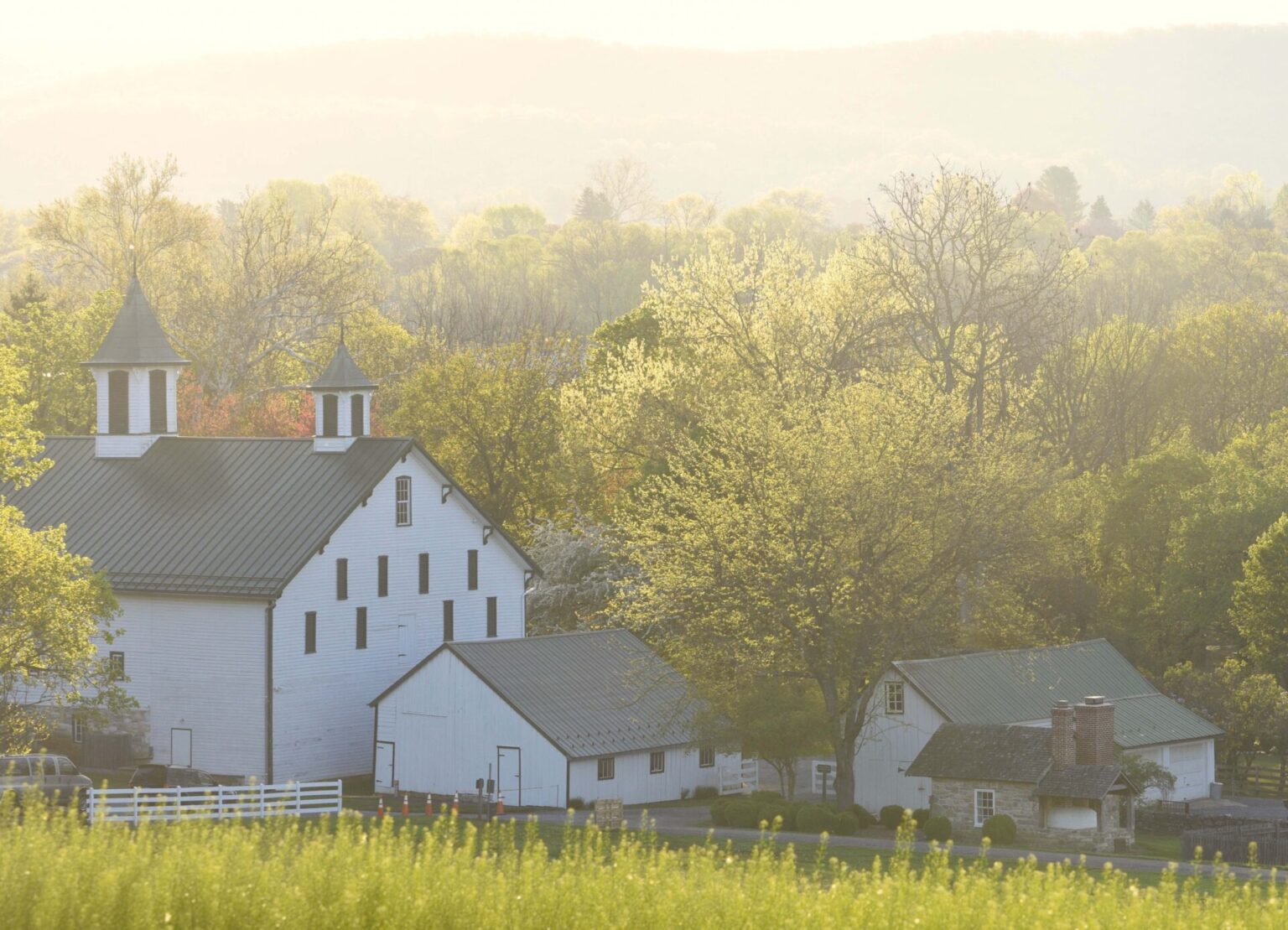Renfrew Museum and Park is a sparkling jewel in Waynesboro’s historical necklace. This scenic 107-acre property preserves an interconnected chain of agricultural and architectural heritage, beautifully fashioning the unique dynamics of a historic Pennsylvania German farmstead. Renfrew possesses durable links to Waynesboro’s frontier days. These ties are interpreted amid a string of ancient inhabitants and distinctive endeavors over nearly three centuries. Today, Renfrew intelligently meshes these important legacies with contemporary cultural programs and first-class recreational opportunities.
Renfrew’s lovely grounds are a haven for nature lovers who enjoy a mix of Cumberland Valley habitats- from bubbling Antietam Creek, to secluded woodlands, open meadows, productive farmland, and rolling terrain affording panoramic views of surrounding Appalachian mountains. Combined with Renfrew’s impressive mixture of exhibits, programs, and events, this perfectly balances the property’s historic relevance from its bygone eras with 21st-century cultural significance.
This lush landscape seduced the area’s first European settlers in the 1700s. A Scotch-Irish family named Renfrew came to the Cumberland Valley during that era and made their home here. During the French and Indian War, southern Pennsylvania was situated in the crosshairs of conflict, and early settlers faced continuous peril. According to local lore, two young Renfrew sisters met their demise on the family’s property in 1764.
Later, German/American tanner Daniel Royer acquired this tract, and together with his descendants, they created a successful and lasting agrarian/business enterprise that included two farms and a grist mill, situated on 150 acres. The Royer’s exhibited the lively can-do spirit of frontier Americans with their industrious, innovative, and ingenious ways.

A stately stone manor house was built in 1812, followed by a smokehouse, milkhouse, and later, a signature white and green-trimmed Victorian-era barn. These structures, known as the Royer-Nicodemus House and Farm, were designated as a National Register of Historic Places property in 1976, one of the first such listings in Pennsylvania.
Just as the Royer’s hard work significantly influenced this property’s birth and growth, Renfrew’s last private owners also created a huge imprint still experienced today. Edgar and Emma Nicodemus purchased the estate, and over many decades the couple faithfully restored the property. Emma Nicodemus was a passionate art collector, personally curating a large portfolio of Early American artifacts that reflected her cultured style and creative flair. When widow Emma died in 1973, she bequeathed her entire property and belongings to Waynesboro’s fortunate citizens.

Renfrew became a museum and park in 1975, honoring Nicodemus’s request to preserve this unique property’s multi-faceted heritage. Today, her art collection is the core of Renfrew’s impressive assembly of nearly 5000 artifacts. This varied group of pieces shows how local artisans created both utilitarian and decorative pieces for the area’s early American inhabitants.
Among Renfrew’s holdings are a remarkable collection of John Bell folk pottery, locally made Pennsylvania/Kentucky Longrifles, textiles, furniture, and farm implements. Many of these items are featured inside Renfrew’s modern museum in an attractive and informative setting.
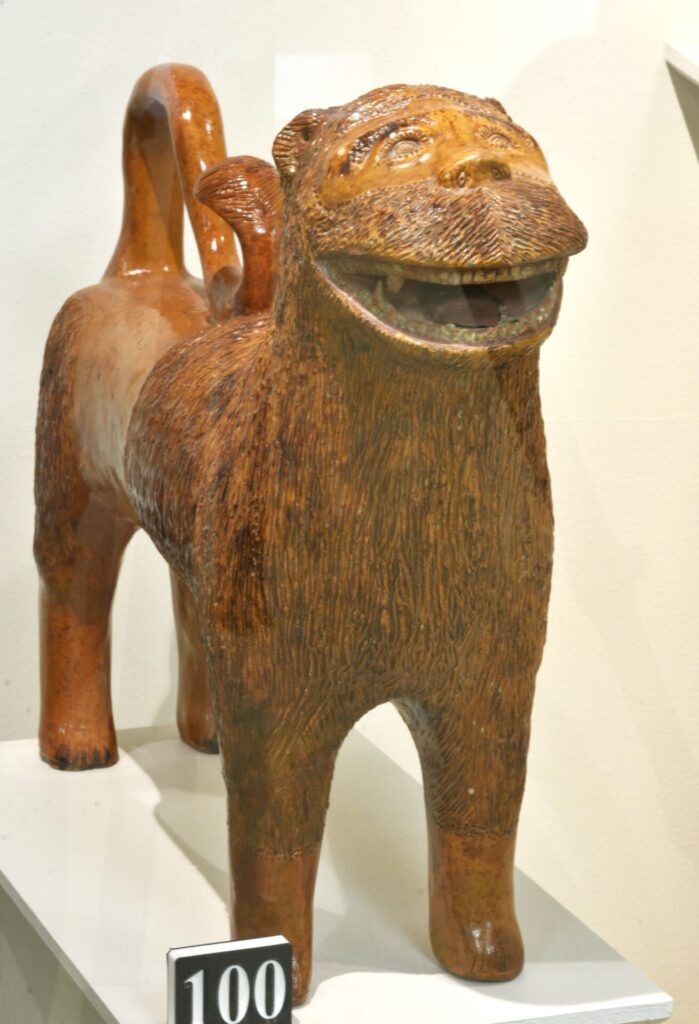
Venturing from Renfrew’s manmade architectural and art treasures, the property’s natural landscape spoils visitors with splendid rural visions, creating emotions that evoke the fleeting fortunes of passing seasons and lure of simpler agrarian times.
A stroll along rocky Antietam Creek provides frequent sightings of great blue herons, kingfishers, and other water-seeking birdlife. In the shade of Renfrew’s forest, whitetail deer are plentiful and shy. But sometimes, curious fawns are seen, peeking through trees in early morning, testing newfound independence.

Each season brings new discoveries around Renfrew. Delicate wildflowers carpet the forest floor in springtime. Newly harvested fields and vibrant falling leaves open up grand vistas in autumn. A dusting of winter snow brings the romantic aura of an impressionist painting to a quiet rural setting.
But summer is Renfrew’s prime season. Nature’s bounty is clearly evident as this landscape flourishes during growing season. Deep green foliage creates seclusion in dense woodlands. Bright sunlight illuminates open fields and pushes cornstalks higher than the tallest man’s head. The soil’s inherent richness and the past bounty of early farmers is easily imagined at this lush oasis. Scanning east with an elevated view toward the barn, this cultivated landscape paints an enduring picture. It is a reminiscent vista, looking backward in time. Renfrew faithfully honors its ancient agricultural roots.
A series of trails meanders through the park, offering a casual stroll or more strenuous hike at any time of year. Two bridges span Antietam Creek, giving Renfrew walkers several options for east/west exploration. These pathways tie into Ed Miller Trail, a paved walkway traveling south to Otterbein Community Park, or leading west into town, finishing at Memorial Park. Renfrew’s grounds are open from dawn to dusk year-round and are free to the public.
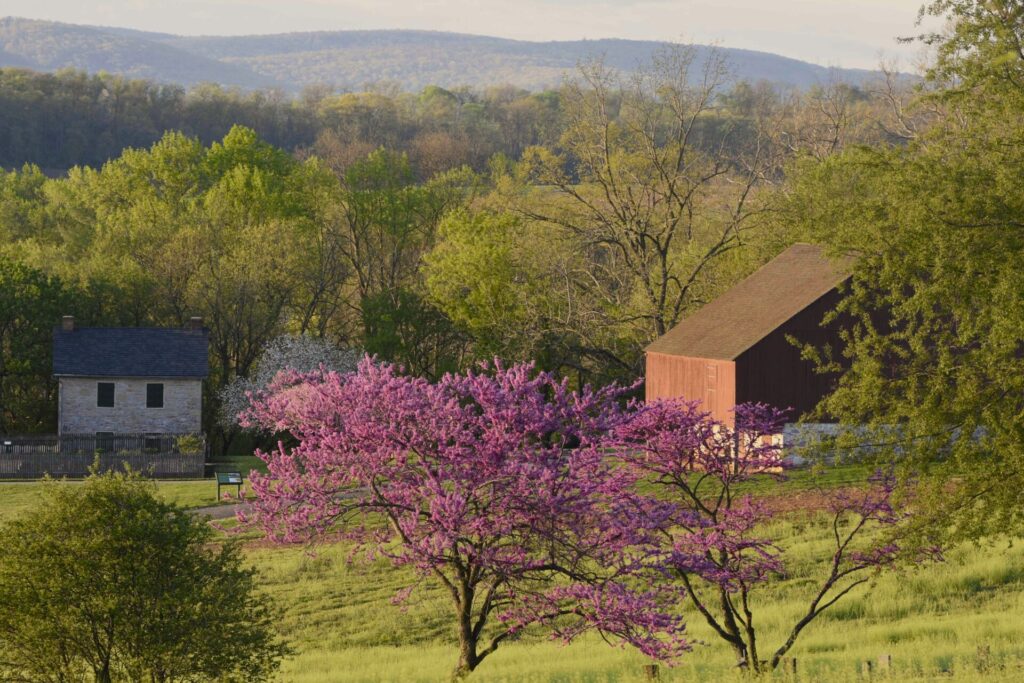
Seen on Renfrew’s southern grounds is the Fahnestock farm. This complex of 19th century buildings includes a restored (1808-built) stone home, reconstructed bank barn, limestone kiln, a ‘four-square’ garden, and foundation ruins of an original creek-side mill. The Fahnestock family was an integral part of the Renfrew property for many years and directly tied to the Royer’s successful farming and milling efforts. This collection of Fahnestock structures is an important historical feature at Renfrew and designated a National Register site.
The German inspired four-square garden is cultivated each year, with various vegetables, herbs, medicinal plants and flowers. This is the largest of two heirloom gardens found at Renfrew, exactly 33-feet square. It represents a mid-1800s garden, which was annually rotated between four vegetable beds. Leafy greens, legumes, and fruits were planted and harvested in authentic German gardens like this.
Adjacent to the Fahnestock Farm, an ambitious new project recently began at Renfrew- the addition of a new grist mill. The handsome contemporary limestone and brick veneer building is now coming into clear form, nearing Phase 1 completion. Renfrew’s goal is to recreate a water-powered relic from the property’s past.

The Royer’s constructed a grist mill on this property in 1807, which utilized two 14-foot overshot wheels to power two sets of grindstones. Water was diverted from Antietam Creek via a 1200-foot headrace, and after providing a reliable rushing power-source, it channeled back to the creek by a 1000-foot tailrace. A vintage attempt to convert this old mill into a creamery never succeeded, and the original Royer mill was demolished in the late 1890s.
The new mill will utilize water pumped in from a newly installed underground piping system, not stream water. Phase 2 of the project will focus on the interior workings of the structure and Renfrew is actively engaged in a fundraising campaign to complete that effort. A generous donor contributed most of the funds to initiate the mill project. When competed, Renfrew will interpret a recreated rustic element from the property’s storied past.
Off in the distance, a small cemetery reposes among the cornfields, a resting place for past inhabitants who perfected agrarian-centered lives on this land. Weathered headstones are etched with names of Waynesboro’s first settlers, including John Burns. Burns (1747-1802) was a pioneer patriot who immigrated from Scotland. He made a home along Antietam Creek, later running a blacksmith shop and sawmill. Burns also built a local log meeting house, forged a cannon fired in the Revolutionary War, and fought bravely for a new nation’s freedom.
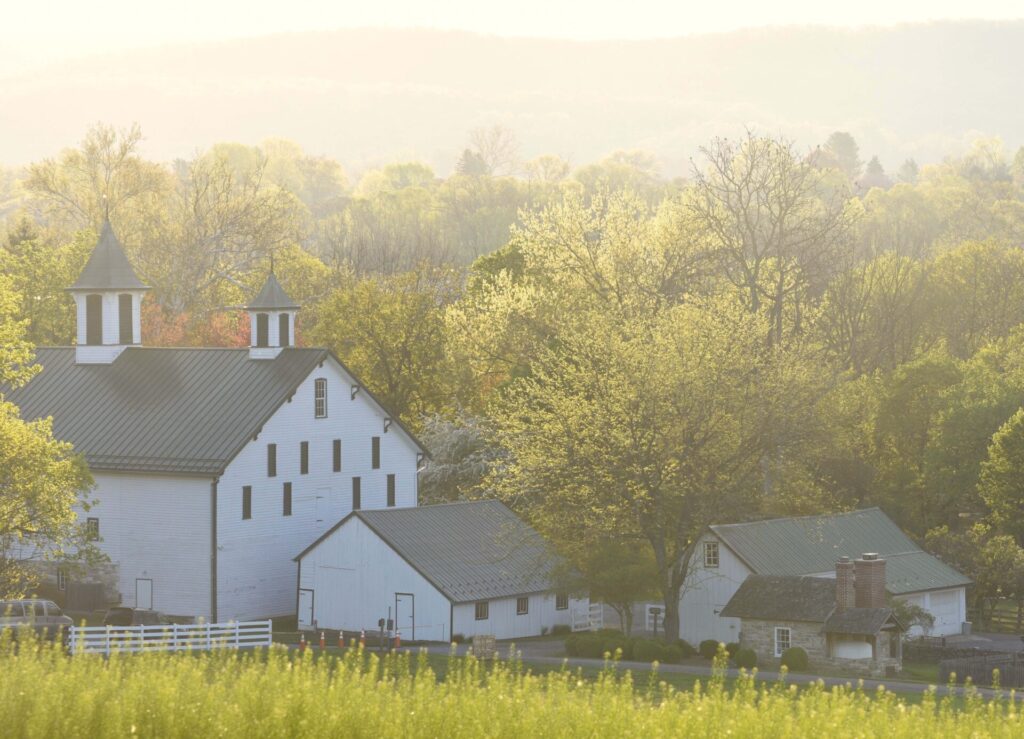
During the Cumberland Valley’s illustrious past, various local industries sprouted, creating new machines and technologies to increase agricultural production and simplify annual harvesting. The success of the Royer’s, and other farmers who followed them, were a vital element in a bond formed between industry and agriculture. This pairing greatly contributed to Waynesboro’s impressive development throughout the years. Like a precious stone discovered in a streambed, Renfrew personifies this combined history and rich culture in one beautiful and intriguing property.
Today, Renfrew hosts a series of events and programs that offer cultural and educational benefits, reinforcing the organization’s mission of historical authenticity, and serving as a welcoming destination. An upcoming Farmstead Taste and Tour event on August 6th gives visitors an opportunity to taste locally sourced seasonal fare in the tradition of a Pennsylvania German farm. The Judy Elden Concert Series is a free slate of local music performances on Thursdays at 6:30 pm. Also, during summer, Yoga Flow is a free event held Fridays (June through August) on Renfrew’s shaded grounds from 9-10 am, led by a certified instructor.
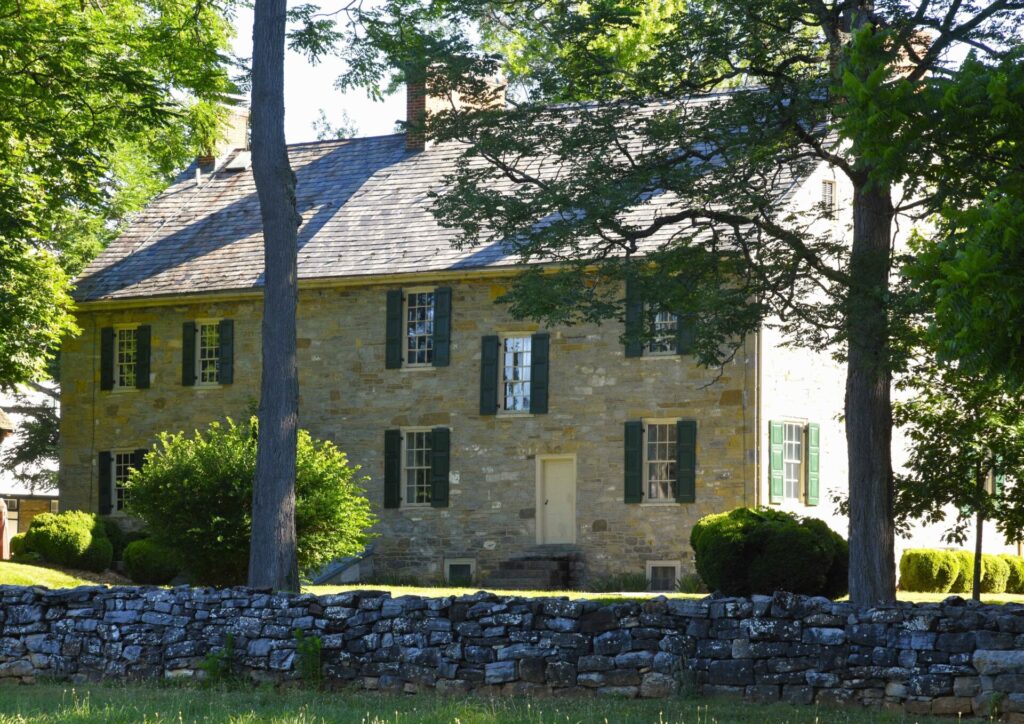
Renfrew is located at 1010 E. Main Street in Waynesboro. For more information, including Visitor Center hours, upcoming programs/events/reservations, or contributions to the new mill’s fundraising campaign, call 717-762-4723, or visit Renfrew’s website: renfrewmuseum.org.



